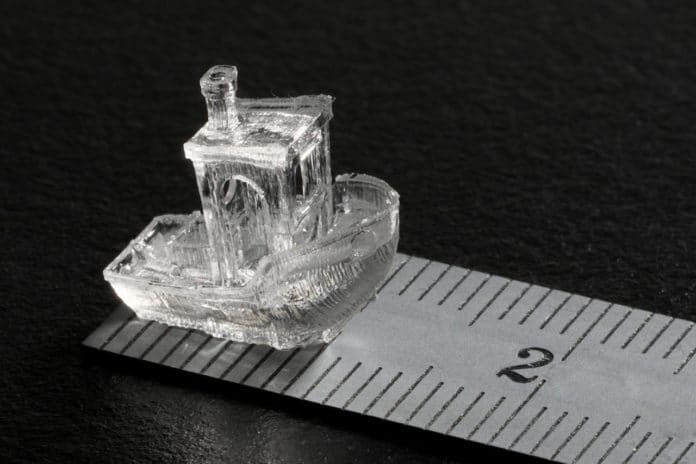Based on the principles of tomography, scientists at EPFL have developed a new method for 3D-printing small, soft objects. This groundbreaking 3D-printing method can be used to make tiny objects with unprecedented precision and resolution – all in record time.
It all starts with a translucent liquid. Then, as if by magic, darker spots begin to form in the small, spinning container until, barely half a minute later, the finished product takes shape.
Damien Loterie, the CEO of Readily3D, said, “Conventional 3D printing techniques, known as additive manufacturing, build parts layer by layer. The problem is that soft objects made that way quickly fall apart.”
“What’s more, the process can be used to make delicate cell-laden scaffolds in which cells can develop in a pressure-free 3D environment. The researchers teamed up with a surgeon to test 3D-printed arteries made using the technique. The trial results were extremely encouraging.”
In a volumetric 3D printer, a liquid photosensitive polymer is irradiated from multiple angles with pre-computed dynamic light patterns. The three-dimensional accumulation of light dose inside the build volume results in the solidification of the desired object in a matter of seconds.
The printer works by sending a laser through the translucent gel – either a biological gel or liquid plastic, as required. It’s all about the light. The laser hardens the liquid through a process of polymerization. Depending on what we’re building, we use algorithms to calculate precisely where we need to aim the beams, from what angles, and at what dose.
The system is currently capable of making two-centimeter structures with a precision of 80 micrometers, about the same as the diameter of a strand of hair. But as the team develops new devices, they should be able to build much more prominent objects, potentially up to 15 centimeters.
Christophe Moser, who heads the LAPD, said, “The process could also be used to quickly build small silicone or acrylic parts that don’t need finishing after printing.”
The team has published its findings in the journal Nature Communications.
